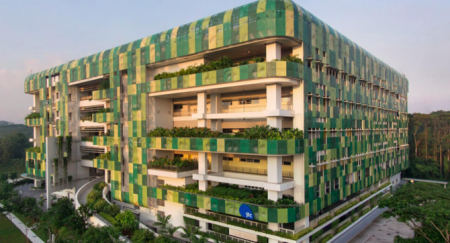July 4, 2018 – We humans produce one thing more than any other – lots of garbage. Archeologists consider the stuff a treasure trove of information about societies from the past when they dig down through centuries of deposits. But for the rest of us garbage poses an enormous problem. We 7.5 billion humans today produce over 2 billion tons of the stuff every year. Much of it goes into landfill sites. Much of it gets flushed into our streams, rivers, lakes, and eventually the ocean. Some of it is burned.
For cities like Toronto, the garbage management process is multifaceted and problematic. Households, apartments, and condos have multi-coloured bins for recyclable plastic, metal, paper (blue), organic recyclables (green), and what is disposable (grey). The city collects from homes with curbside pickup and delivers the blue bin recyclables to warehouses where the stuff is sorted and stashed awaiting buyers who can turn the collected material into new products. The green bin recyclables are collected to turn into compost which the city uses for parks and other green spaces, and gives away to residents at community recycling events. The grey bin garbage goes to landfill sites with one even in neighbouring Michigan. That’s right. Toronto exports garbage to the United States and we pay an American landfill operator to take it. At one point Toronto was considering sending its non-recyclable garbage to an abandoned open-pit iron mine site some 600 kilometers (almost 400 miles) north of the city.
Proposals to incinerate garbage have always been opposed by Toronto politicians on the grounds that pollutants produced from burning impact air quality, add greenhouse gases to the atmosphere, and produce ash waste that can be filled with unknown quantities of toxic metals and chemicals. But in other urban centers where landfill options are limited, incineration is seen as a solution to the garbage problem.
Singapore is the latest city to see garbage in a “waste-to-energy” light. Because the city has very little real estate it can waste on waste, it has opened a new facility, the Innovation Centre for Environmental Technology, where research by a Japanese company, JFE Engineering, is developing direct melting gasification, a technology that burns garbage leaving only slag (which can be put into landfill), metal, and other potentially commercial end products.

Meanwhile in Duiven, The Netherlands, the Dutch waste to energy company, AVR, is building a waste-to-energy plant which includes large-scale carbon capture and utilization (CCUS) capability. After the waste is burned 60,000 tons of carbon dioxide (CO2) will be captured and liquefied for transport to the French company, Air Liquide, who will use the gas in Dutch greenhouse operations where vegetables, fruit, flowers, and other plants are grown. The capacity of the CCUS technology can only manage 15% of the total CO2 emissions produced, but AVR expects to find additional customers with a goal to eventually capture and reuse 800,000 tons annually. Other potential customers include manufacturers of building materials, concrete, plastics, and biofuels. The biofuels produced could even be used to heat the greenhouses through the Dutch winter.
But the ultimate waste-to-energy technology is one that produces zero emissions. Companies and inventors have come and gone claiming to have found the solution for economically turning waste into energy without contaminating byproducts. One such is ZEROS System, a Highlands, Texas-based company just to the east of Houston. Its website describes the Zero-emission Energy Recycling Oxidation System capable of disposing of waste and turning it into energy and useful products while producing no emissions. ZEROS, based on patents first issued in the 1980s, has been used once in remediating an oil field accident. But other than that has yet to have attracted a customer to implement its stackless technology. As you read the content of the website it sounds too good to be true. Finding corroborative evidence to support the site’s claims yields next to nothing. The last report on the technology looks at economic feasibility. It was written in 2011. And then there is a 2013 YouTube video.
The search for the zero or negative-zero emissions holy grail is still on. Maybe the new Singapore initiative or the work being done in The Netherlands will finally produce it. I’ll keep you posted.








